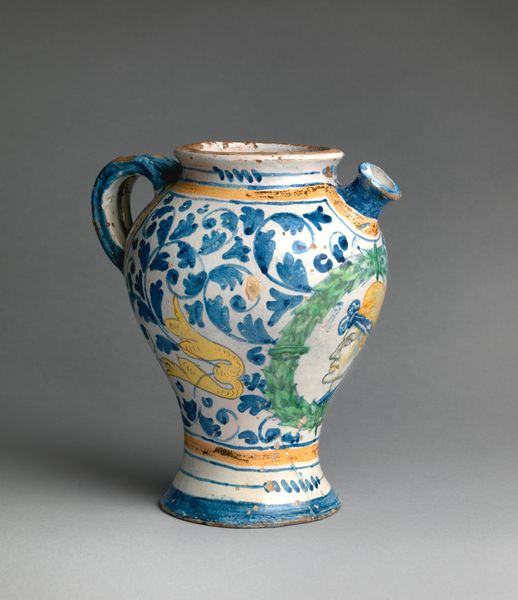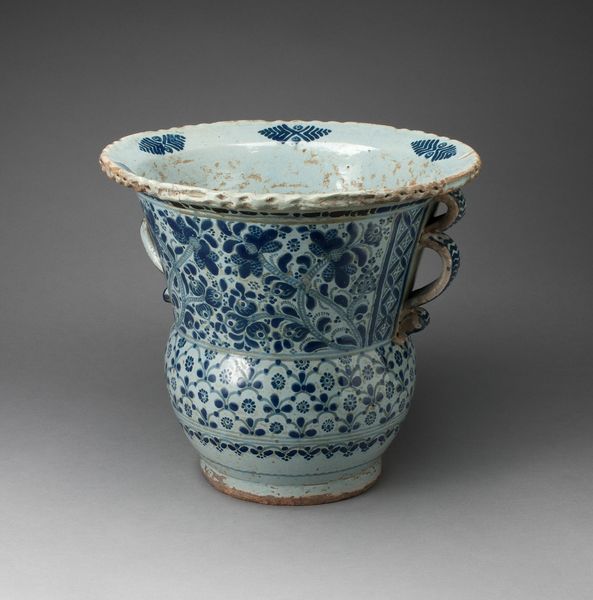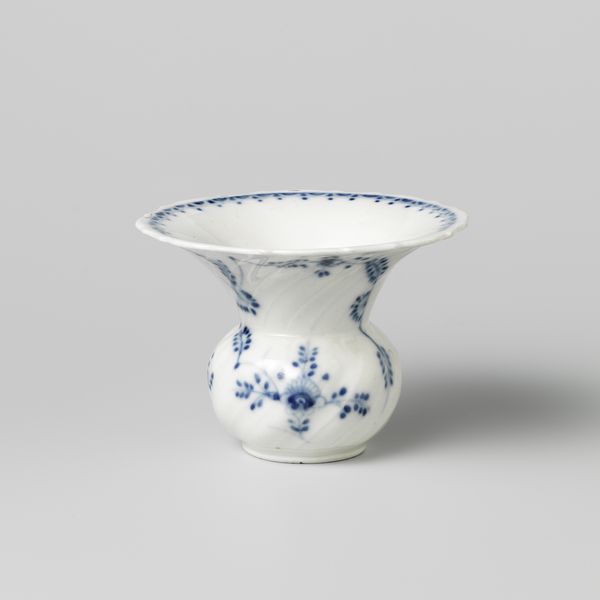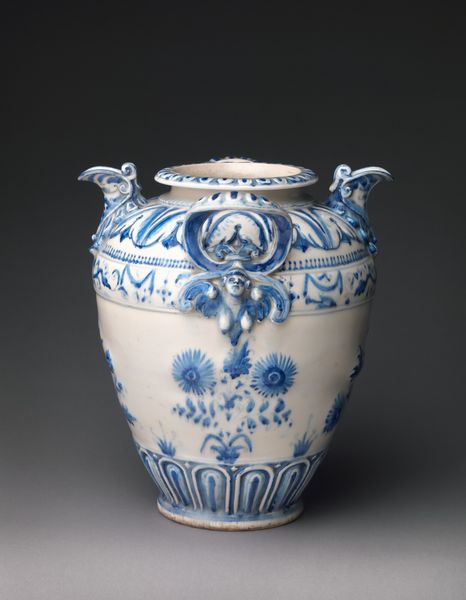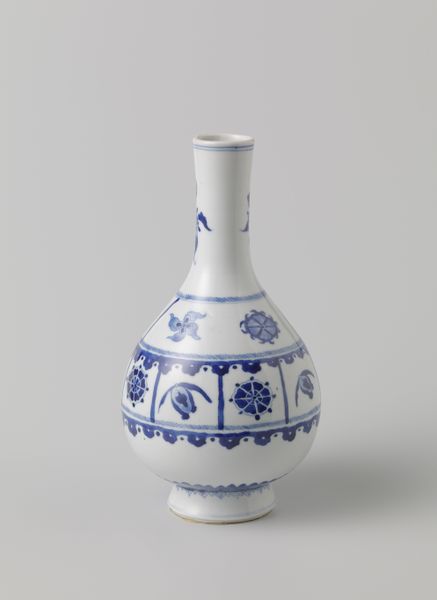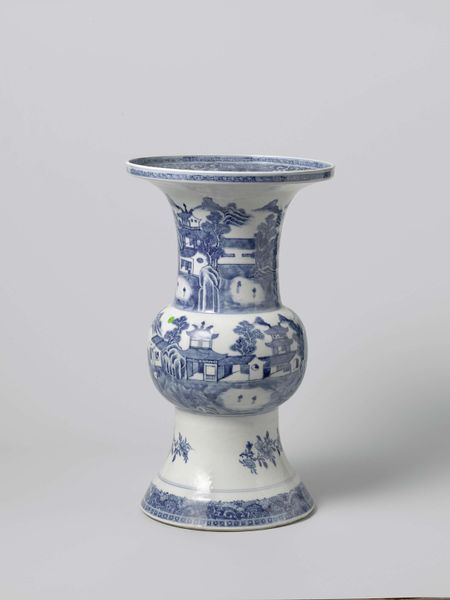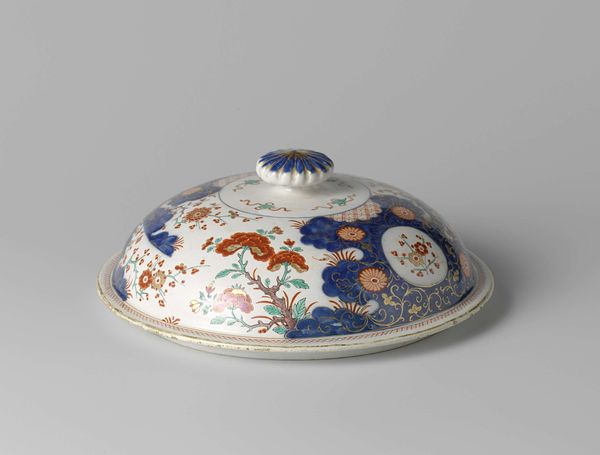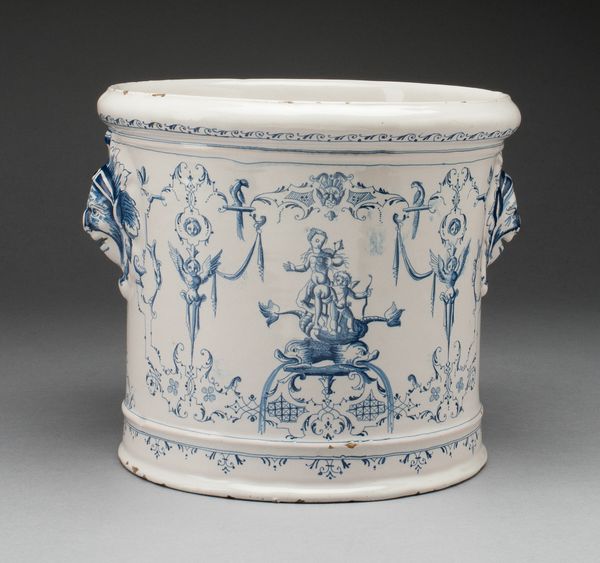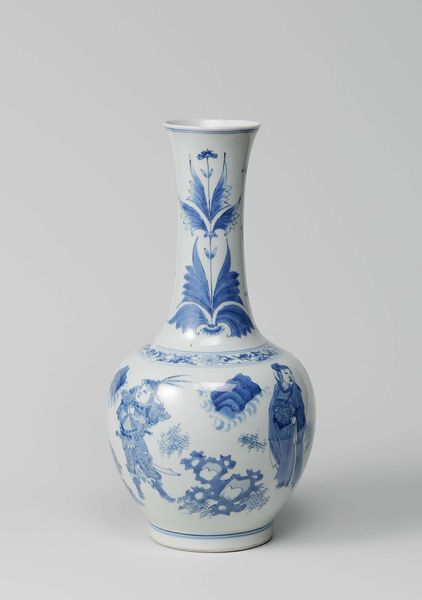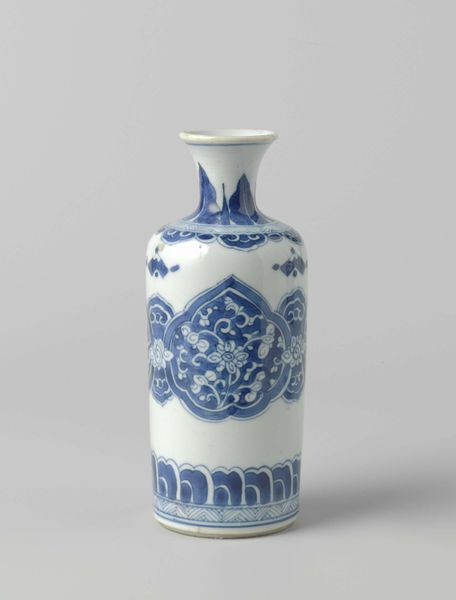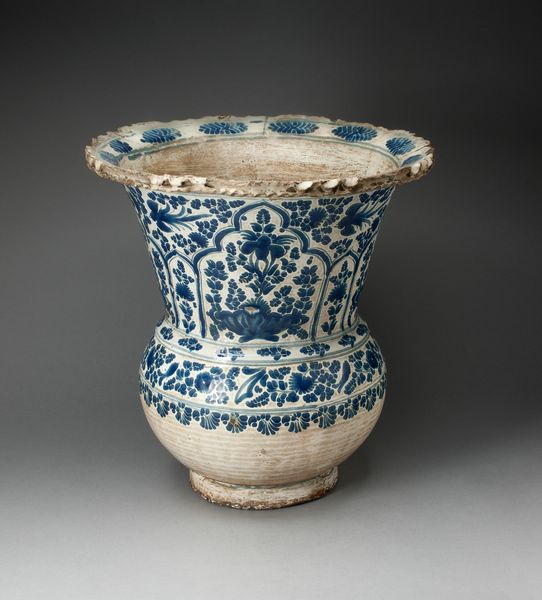
Dimensions: height 10.8 cm, diameter 7.4 cm, width 10.2 cm
Copyright: Rijks Museum: Open Domain
Curator: Look at the whimsical charm of this porcelain tea service, specifically this milk jug— part of a “tête-à-tête," or "tea for two.” Crafted around 1782-1784, by the Loosdrecht porcelain factory. You can find it here at the Rijksmuseum. Editor: It’s undeniably Rococo, right? That pastel celadon green, dotted with what looks like gilt—it just feels airy and light. Though I am curious about the narrative scene in the center. Curator: The scene provides insight into the artistic tastes and social climate of the era, particularly in the Dutch Republic. While the gold dots feel purely ornamental, echoing French trends in porcelain, the painting on the front illustrates a story, likely exoticized figures from the "Levant", meant to showcase Dutch understanding of and engagement with the wider world. Editor: The way the figures are arranged feels interesting. See how their bodies lead the eye from left to right, across the object’s curvature? It suggests a very deliberate composition, almost as if they intended the viewer to interact with it in a specific manner. Curator: Indeed, it reflects how trade and commerce fueled both curiosity and fantasies. Loosdrecht aimed to appeal to the wealthy merchant class who were keen on demonstrating their sophistication and worldly awareness through owning items like these. These wares also reinforced power structures, since those who commissioned these wares could display images representing entire regions they might never have encountered. Editor: The translucency of the porcelain also speaks to its quality and preciousness as an object. Consider its delicate rim with repeating gilded semicircles: such meticulous details make it quite fascinating from a formal perspective, really inviting an audience to ponder surface design elements during what was, in effect, a performative tea ritual. Curator: Exactly. Porcelain itself was a signifier of wealth, and in that era it speaks to the desire to emulate aristocratic French culture. Editor: It makes me think how even everyday objects carry layered cultural and visual meaning that change dramatically over time. Curator: Yes, and seeing how an artwork like this can be both functional and deeply historical keeps me fascinated by the art.
Comments
rijksmuseum about 2 years ago
⋮
Manufactuur Oud-Loosdrecht sugar bowl: Manufactuur Oud-Loosdrecht or Porceleinfabriek aan den Amstel Loosdrecht and Ouder-Amstel, c. 1782–1784 hard-paste porcelain
Join the conversation
Join millions of artists and users on Artera today and experience the ultimate creative platform.
